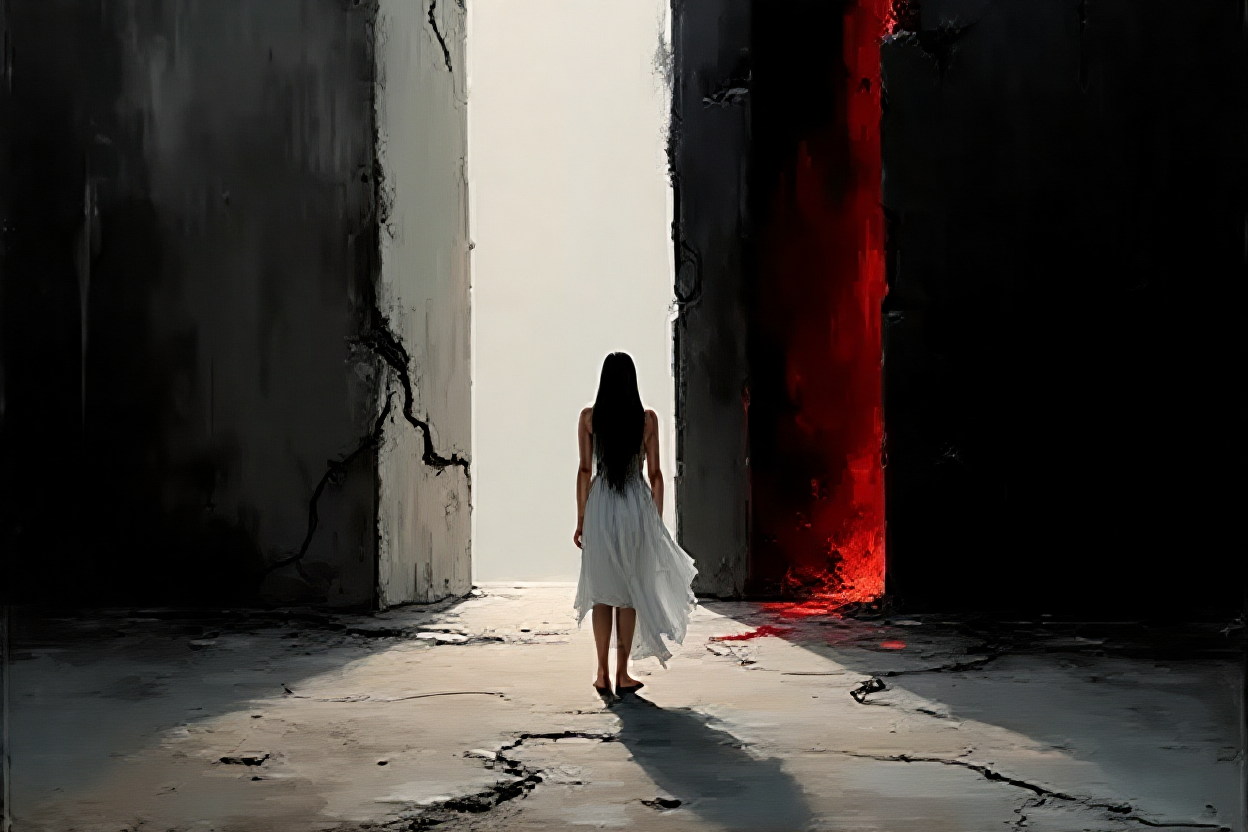
15 Mar Art as a Domain of Choices: The Creative Process Between Decision and Resistance
Introduction
At the very heart of art pulses something more primitive and fundamental than theory: the moment of choice. Not just any choice, but that vertiginous instant when, facing the chaos of possibilities, the artist traces a line, impresses a mark, modulates a sound. It’s there, in that precise moment, that art comes to life – not in theoretical abstractions, but in the concrete gesture that transforms the possible into reality.
Each brushstroke, each note, each written word carries the weight of infinite discarded alternatives. The creative process thus reveals itself as a continuous dance between decision and renunciation, where each choice opens new possibilities while closing others. It’s a process that unfolds in the living time of experience, in that qualitative dimension that escapes measurement but constitutes the very fabric of artistic creation.
The Artistic Process As a Space of Decision
There’s something vertiginous about the moment of creation. The artist finds themselves suspended among infinite possibilities, and every gesture – even the smallest – can radically change the course of the work. It’s not just a matter of technique or skill: it’s a continuous dialogue between intention and matter, between vision and the resistance of reality. Sometimes it’s the material itself that suggests the direction, other times it’s a sudden intuition that guides the hand. But always, at every moment, the artist must choose.
And these choices are never isolated. They intertwine, overlap, create unexpected resonances. One color calls for another, a form generates the necessity of its opposite. The creative process reveals itself as a complex network of interconnected decisions, where each element influences all others in a game of ever-precarious balances.
The Work As Living Testimony
To look at a work of art also means reading the history of decisions that generated it. Under the seemingly immobile surface of the final result still pulses the energy of all the gestures, hesitations, and reconsiderations that shaped it. Like archaeologists of the creative process, we can discern traces of abandoned paths, of possibilities explored and then discarded.
In the performing arts, this temporal dimension emerges with even greater evidence. The artist’s body becomes the very field where decisions take shape, where thought immediately becomes action. There is no longer separation between the moment of choice and that of execution: everything happens in the present instant, in that fraction of a second where a thousand possibilities condense into a single necessary gesture.
Freedom in Constraint
Paradoxically, it is precisely in limitation that creative freedom finds its maximum expression. The artist does not choose in absolute emptiness, but within precise constraints: technical, material, cultural limits. Yet – or perhaps because of this – every decision becomes an act of freedom. Choosing always means confronting these limits, bending them, reinventing them, transforming them from obstacles into opportunities.
The artist’s body itself, with its possibilities and its limits, becomes part of this game. It is no longer just an instrument, but a territory of exploration where matter meets imagination, where technical gesture merges with creative impulse in a process of continuous reinvention.
Creative Resistance
In an increasingly standardized world, where even art risks being reduced to mere production of commodities, every authentic choice becomes an act of resistance. It’s not about frontal or declared opposition, but something more subtle and perhaps deeper: the stubborn insistence on following the inner necessity of the creative process, even when this goes against market logic or current fashions.
The artist who chooses thus becomes, almost in spite of themselves, a point of resistance to widespread conformism. Not because they deliberately seek confrontation, but because in their daily work of choice and creation they keep alive the possibility of a different relationship with reality – more attentive, deeper, more authentic.
Conclusion
Art lives by these choices – large and small, conscious and instinctive, technical and emotional. It is in this continuous exercise of decision that its ability to create meaning, to open spaces of freedom, to keep alive the possibility of the new comes into play. It’s not a linear or predictable process: it often proceeds by leaps, by sudden intuitions, by happy accidents. But it is precisely in this unpredictability, in this margin of risk and discovery, that art continues to renew itself and surprise us.
Artistic choice thus reveals itself not as an isolated moment but as a continuous practice, a way of inhabiting the world. A practice that, in its small way, keeps open the possibility of a more conscious and more intense existence, where every gesture carries with it the weight and joy of an authentic decision.
Bibliography
Bergson, H. (1907). L’Évolution créatrice. Paris: PUF. [Ch. III: “De la signification de la vie”]
Deleuze, G., & Guattari, F. (1980). Mille plateaux. Paris: Minuit. [Ch. VI: “Comment se faire un Corps sans Organes?”]
Didi-Huberman, G. (2000). Devant le temps: Histoire de l’art et anachronisme des images. Paris: Minuit. [Ch. II: “L’image-matrice”]
Didi-Huberman, G. (2002). L’Image survivante: Histoire de l’art et temps des fantômes selon Aby Warburg. Paris: Minuit. [Ch. III: “La survivance des images”]
Žižek, S. (2006). The Parallax View. Cambridge: MIT Press. [Ch. I: “The Stellar Parallax”]
